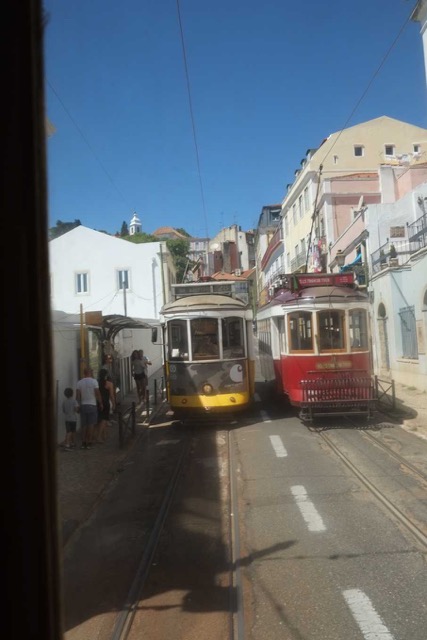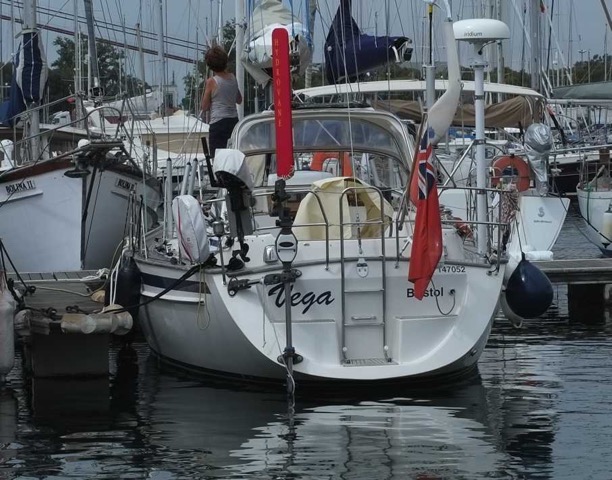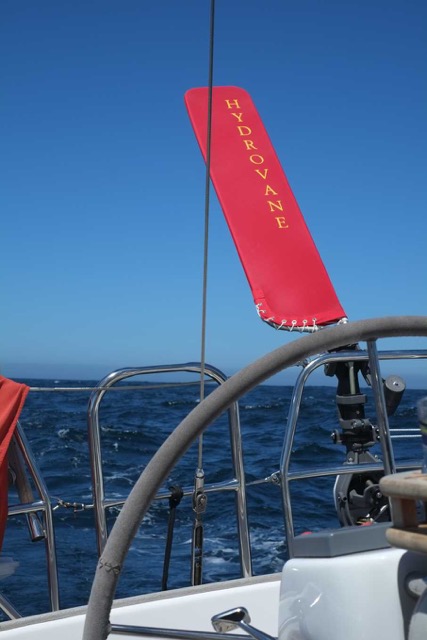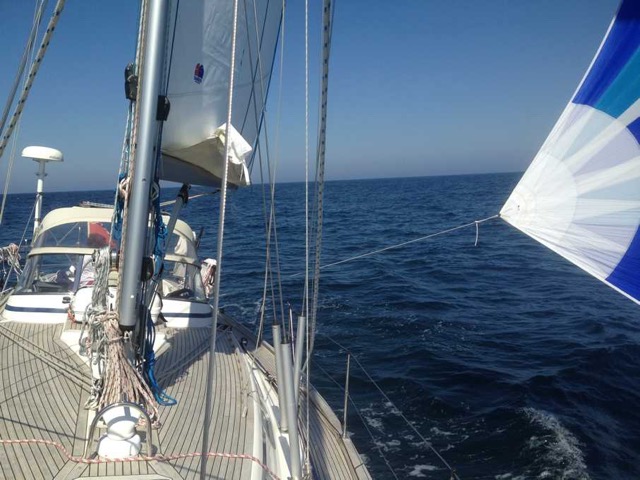Its Hot - Really Hot!

Vega
Hugh and Annie
Sun 30 Aug 2015 00:17
| After two days of following the Lonely Planet tourist trail in Lisbon we have headed south again with another overnight trip, this time to Lagos (Lagoosh to we linguafiles and nothing to do with Nigeria). Lisbon actually is a lovely city with little dereliction, well preserved old buildings and eye catching new development along the riverfront. If the Portuguese economy is next in line to fold after Greece it certainly doesn’t appear that way from the visitor’s perspective. As ever in Europe the public transport is wonderful and to get into the city you have a choice of tram, bus, train, taxi or cycling. As well as new trams there are still those famous old ones in regular use and Tram 28 will take you around the narrow, steep and winding streets of the Alfama district which was the highlight of our visit. 45% of the energy in Portugal is from renewable sources, 31% in Spain.The Age of Discovery is the bedrock of Portuguese history and you are reminded of it everywhere you go in the street names, statues and Manueline buildings. Annie may have more to say on the subject but in the era of modern charts, electronic chart plotters, GPS and so on it is easy to forget quite how adventurous life at sea was at one time. I was reminded of this also when we were in Spain and visited Noia which is at the head of the Ria de Muros. You can’t get up to Noia in anything bigger than an inflatable these days but in the 16th century the town was a significant Spanish port. Which is why Francis Drake went there and put the boot in following the Spanish Armada. Given that this is the Costa del Morte and Drake would have had little more than a magnetic needle floating in oil to navigate with how on earth did he expect to find Noia and avoid all those uncharted rocks at the same time?! I must dust down my “History of Navigation” that graced our coffee table in Maurice Road for a few years without actually being read.Robert Macfarlane in "The Old Ways” writes about the seafaring links that were the basis of trade and communication for the Celtic groups living all along the Atlantic coast from Spain to the Western Isles and how there was a verbal tradition of navigation handed down through the generations. Similarly the Polynesian Islanders roamed the South Pacific from island to island using the direction of the current, wave shapes and direction, cloud formations and of course the stars to accurately guide them. The Phoenicians traded as far as Cornwall. Mind boggling really but plausible with generations of accumulated knowledge to learn from. Even before Harrison invented his famous clock so that seafarers could know their longitude, given the difference between local and Greenwich Mean Time, you could actually calculate longitude using a system known as “lunars”. Well, you could once optical telescopes were good enough to see the moons of Jupiter. Jonathan Raban writes about this in “A Passage to Juneau” and describes how Captain Vancouver got the longitude of his namesake city wrong by, as I recall, about five miles. None of this really explains how Drake found Noia. I suppose a rough estimate of your latitude and how long you had sailed east or west was the basis of things. I remember once we were coming out of L’Arber Wrac’h in Brittany when the chart plotter packed up. Our first instinct was to put out a mayday but then the panic lessened and we discovered the joy of actually looking at features on the coast and using a hand bearing compass to work out where we were on the paper chart.Incidentally, several of the boats we have encountered have been flying a Celtic flag. This is a mosaic of flags from Celtic countries and regions such as Wales, Isle of man, Brittany, Galicia and so on. Is there some kind of Celtic revival going on?The sail down from Lisbon was good - a northerly 10 to 15 kts of breeze made for a comfortable overnight passage with just a couple of periods when the wind fell to the point at which we put the motor on. Annie had just turned in for her spell of sleep when the sound of an engine could be heard but look as I might there was no other vessel to be seen. And then suddenly it was like the scene in Close Encounters when the spaceship appears in a blaze of light - only in this case it was some kind of military or coastguard aircraft with us caught firmly in its headlights. It came in just above sea level and banked sharply away at the last moment with a roar of its two turboprop engines that brought Annie hurrying up into the cockpit. It stayed in the area for around half an hour with two or three return passes to have another look at us.The next brightest thing to pass was a cruise liner that at just under 1000ft long I imagine is pretty big. It was called “Costa Magica” and headed for Lisbon. Costa Magica………………!! But the brightest thing of all was the moon. It is full at the moment and is so bright you can only see a few of the brightest stars. Good news on the technical front. Our replacement Hydrovane drive unit was waiting for us in Lisbon and, albeit not the five minute job suggested by the instructions, it was nevertheless fitted by yours truly in about three hours. It works a treat! And finally it is hot. So hot that nothing more than shorts and a tee shirt is required, even at night. So we are done with Costa del marinas and headed for some quiet anchorages in idyllic sandy bays and to try out the new anchor float that I found in Cascais of which more in a later post. As promised, one of the pictures was taken in the supermarket in Cascais and shows some kind of deep sea fish the likes of which I have only ever seen in TV documentaries. We have seen the same fish here at the market in Lagos where there were even Moray eels!        |